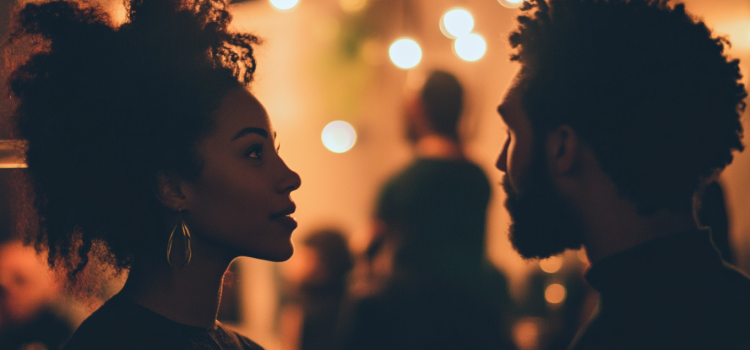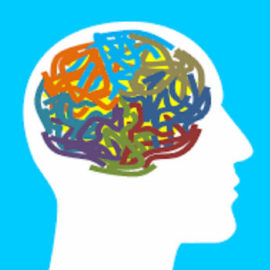
Have you ever wondered how you instantly know whether someone is genuinely happy to see you? What’s happening in your brain when you pick up on unspoken tension in a room?
In Subliminal, Leonard Mlodinow explores how our unconscious mind handles social processing without our awareness. Your brain constantly analyzes facial expressions, body language, and vocal tones, helping you navigate complex social situations effortlessly.
Keep reading to discover how your unconscious mind shapes your social world in ways you’ve never imagined.
Unconscious Social Processing
While your unconscious mind processes all kinds of sensory information, it’s particularly important in social processing—helping you pick up on and interpret social cues. These are the subtle signals that help you understand and interact with other people. This sophisticated capability evolved because social connection is a fundamental human need that greatly influences our behavior and well-being.
(Shortform note: The “social brain hypothesis” takes this idea that the ability to create social connections is crucial even further, suggesting that managing social relationships wasn’t just one of many pressures driving human brain evolution—it was the primary force shaping our cognitive capabilities. According to this theory, proposed by anthropologist Robin Dunbar, the remarkable size and complexity of the human brain evolved specifically to handle the computational demands of living in large social groups. This may explain why so much of our unconscious processing power is dedicated to social information: Our brains evolved around the challenge of understanding and connecting with others.)
Mlodinow explains that specialized brain regions, such as the fusiform face area (FFA), automatically analyze faces, expressions, and body language. Our unconscious mind interprets these nonverbal forms of communication effortlessly, enabling us to seamlessly navigate complex social situations that would otherwise overwhelm our conscious mind and its ability to parse what’s going on around us.
(Shortform note: While Mlodinow explains how our unconscious mind constructs our perception of our social world, recent research on the FFA adds another layer to this story. Scientists long believed this region was specialized for processing faces, but studies of chess experts suggest it may help us process any complex but familiar visual patterns we need to understand holistically. Just as we don’t analyze individual facial features but take in faces as meaningful wholes, chess masters don’t see individual pieces but perceive patterns across the board. This suggests our unconscious mind doesn’t just fill in gaps in our perception: It organizes information into meaningful patterns based on our experience and expertise.)
Mlodinow explains that the unconscious mind processes several key channels of social information. Let’s look at each one.
Initial Categorization
Within seconds of meeting someone, the unconscious mind automatically categorizes them by gender, age, race, and other social markers, using cues like facial characteristics, clothing, and even environmental context. For instance, when you walk into a business meeting, your brain rapidly processes whether someone is likely an executive (based on their age, attire, and where they’re sitting) or a junior employee.
Facial Expressions
Our unconscious mind also processes facial expressions—a universal and innate way for humans to express basic emotions like happiness, fear, and anger. Mlodinow explains that our facial muscles are governed by separate voluntary and involuntary neural pathways, which enables the unconscious minds to quickly distinguish genuine “Duchenne smiles” involving the eye muscles from forced smiles using only the mouth muscles.
(Shortform note: Psychologists say the Duchenne smile, characterized by the lifting of the corners of the mouth and the crinkling of the eyes, is one of the most authentic expressions of happiness. This facial expression can elevate mood, foster social connections, reduce stress responses, and even shape positive perceptions of a person’s trustworthiness and sincerity.)
Vocal Qualities
While we consciously focus on the words another person is saying, our unconscious minds are processing subtle cues from their voice. These signals provide a continuous undercurrent of information that shapes our impressions of and relationships with other people. Studies show we can judge traits like dominance, trustworthiness, and even fertility from voice pitch, speech rate, and tone.
Body Language
The unconscious mind also processes nuances of body language, including gestures, posture, eye contact, and use of personal space. This nonverbal “conversation” reveals social dynamics and hierarchies. For example, people automatically adjust their eye contact patterns based on perceived status—those who see themselves as having higher status tend to make more eye contact when speaking than listening, while those who feel they have lower status do the opposite.
| Lost in Transmission: Processing Social Cues in Digital Communication Our unconscious minds have learned to process body language and vocal cues during in-person interactions, as Mlodinow explains. Neuroscience research suggests that video communication disrupts this processing in subtle but important ways. When we interact through screens, our brains receive incomplete or distorted versions of crucial social signals like facial expressions, voices, and body language. Video compression algorithms can blur micro-expressions, choppy audio can mask variations in vocal tone, and limited camera views mean we miss many body language cues entirely. This isn’t just an inconvenience: Research suggests that video calls require more cognitive effort because our unconscious social processing systems are working with degraded information. Mirror neurons, which help us understand others’ actions and emotions, show reduced activation when observing someone through video compared to in person. This helps explain why many people find video calls more mentally exhausting than face-to-face interactions—our brains are expending extra energy trying to piece together a complete social picture from incomplete signals. |
The Dark Side of Unconscious Social Processing
While this sophisticated system of nonverbal communication helps us navigate social situations and build relationships, our unconscious social processing can also lead to problematic biases. Our tendency to rapidly categorize people—which likely evolved as a survival mechanism—can create an “us vs. them” mentality where we unconsciously perceive our in-group as superior and out-groups as inferior or threatening. This means we often:
- Perceive members of the same category as more alike than they really are
- Exaggerate differences between groups
- Automatically associate people with stereotypical traits based on surface-level characteristics
- Make snap judgments that can fuel prejudice and discrimination
While these quick categorizations might have aided survival in prehistoric times, in modern society they can lead to harmful biases based on differences like race, ethnicity, or religion. Mlodinow explains that understanding these unconscious social biases is the first step toward consciously counteracting them.
| Social Processing Goes Viral While individual brains rapidly categorize faces by gender, race, and other social markers, these automatic categorizations don’t stay individual. They ripple through social networks, becoming collective patterns of perception and bias. Recent research reveals how this happens: When perceivers unconsciously process others less deeply or view them through the lens of stereotypes (like automatically perceiving anger in Black male faces even when none is present), they treat them differently. These behavioral differences then reinforce others’ biased perceptions, which perpetuates the discrimination. This process is particularly evident in how racial biases spread. For white individuals with limited exposure to Black people, racially ambiguous faces trigger unstable activation of racial categories in the brain (which researchers can see in the brain’s abrupt shifting back and forth between white and Black categorizations). This unstable processing reflects stereotypes that white and Black individuals are highly dissimilar, which leads perceivers to resist seeing racial ambiguity. As these perceptual patterns spread through communities, they help explain why prejudice against mixed-race individuals persists, even in societies that consciously embrace diversity. This phenomenon suggests that addressing prejudice requires changing not just individual minds, but the social networks that shape our perceptions. |






